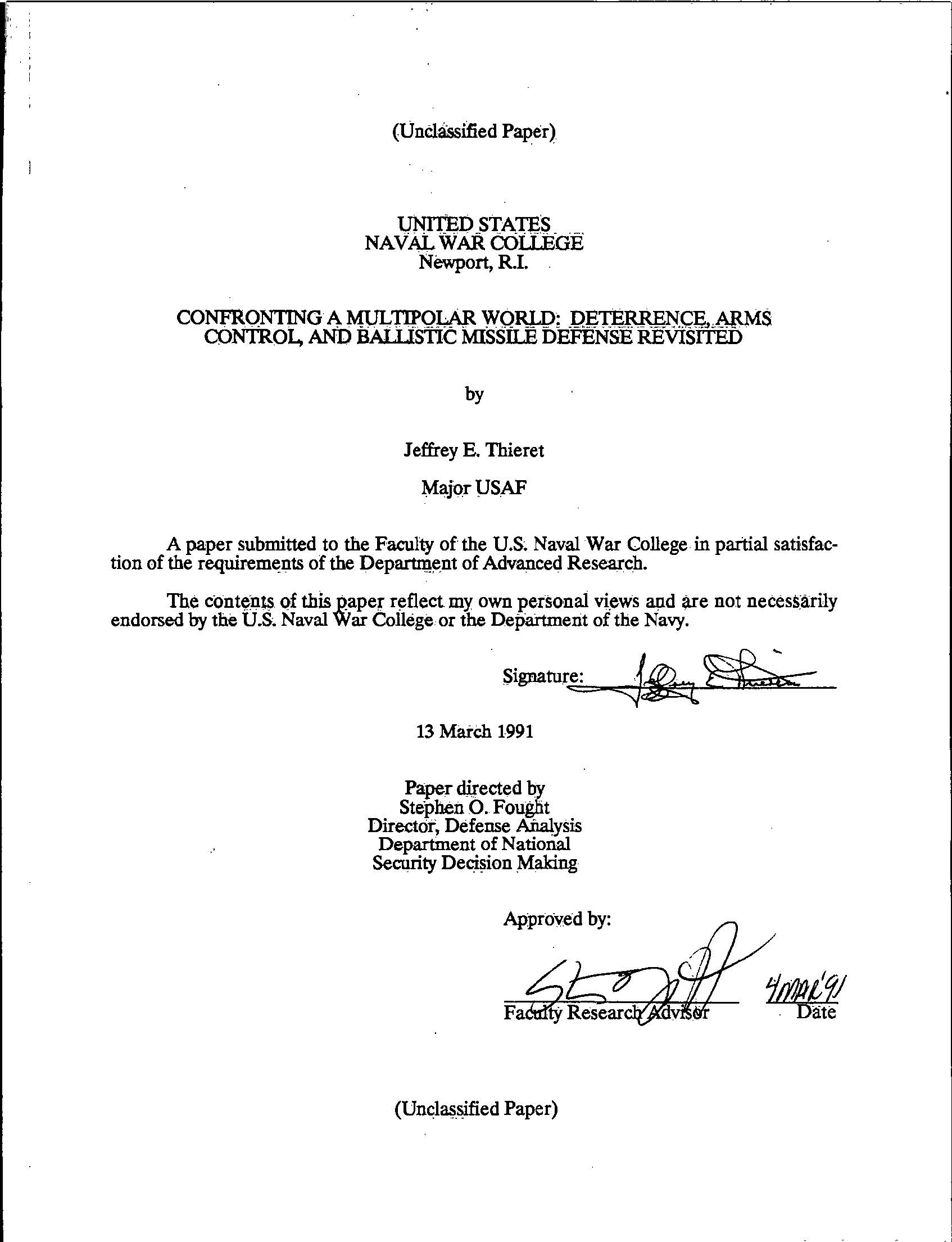Confronting A Multipolar World: Deterrence, Arms Control, And Ballistic Missile Defense Revisited, 1991 Mar 31
Scope and Contents
Student research paper by Major Jeffrey E. Thieret, USAF in satisfaction of the requirements for the Department of Advanced Research. This paper addresses the U.S. and global security strategies, arms control and ballistic missile proliferation, and observations on the ballistic missile threat.
Dates
- Creation: 1991 Mar 31
Creator
- Thieret, Jeffrey E. (Person)
Conditions Governing Access
Access is open to all researchers, unless otherwise specified.
Extent
1 folder ; 101 pages
Language of Materials
From the Record Group: English
Abstract
The end of the Cold War and the resultant collapse of the bipolar world order are resulting in the gradual emergence of regional Third World powers. America is left unchallenged as a global superpower, yet its national strategy must now adapt to deal with a certain degree of multipolarity based upon the regional power centers. The U.S. can achieve global security through of impellance. Impellance, which is proactive and forcible, replaces the entrenched bipolar Cold War national security strategy with a globally oriented one. The added strength of reliable alliances allows an impellant U.S. to lead a collective of nations which desire a new world order. Impellance addresses the need for increased protections against a rising ballistic missile threat in the Third World. Ballistic missile arsenals are viewed as regionally destabilizing, giving belligerent nations the ability to leapfrog over neutral or adjacent nations to inflict psychological and physical damage upon insulated states. Third World ballistic missile systems are rapidly improving through arms and technology transfers. Arms control efforts via impellent strategy, concentrating upon multiple aspects of the proliferation equation, provides both incentives and disincentives to slow the horizontal spread of technology and arms. Improved ranges and accuracies will still occur through indigenous regional improvements and natural technology transfers. Significantly improved anti-tactical ballistic missiles are needed to counter the rising regional threats which arms control alone cannot prevent. Global networking of regional pockets of anti-tactical ballistic missiles can provide a limited degree of protection against increased-range regional missiles. The bipolar 1972 Anti-Ballistic Missile Treat did not consider a multilateral ballistic missile threat. The Treaty is the best existing vehicle to address proliferation control and multilateral defense requirements. The current period of cooperations between the U.S. and the USSR presents an opportunity to amend or redraft eh ABM Treaty to address the multi-axis threat and allow appropriate defensive methods.
Repository Details
Part of the Naval War College Archives Repository

